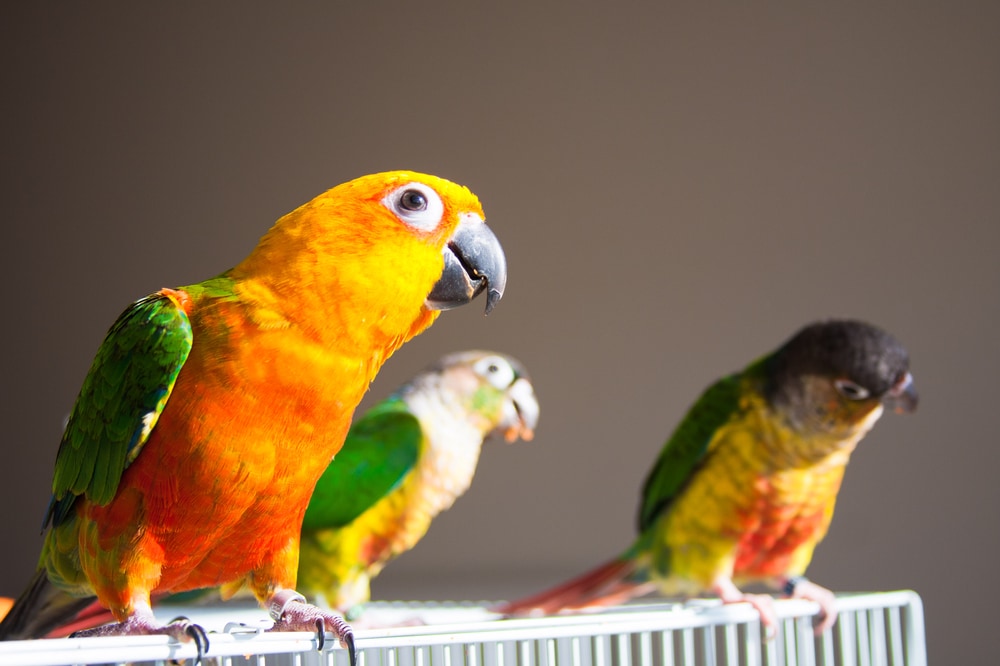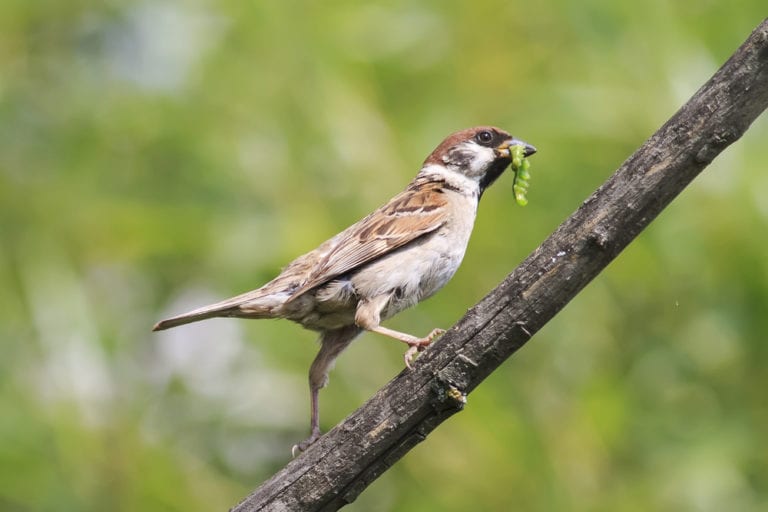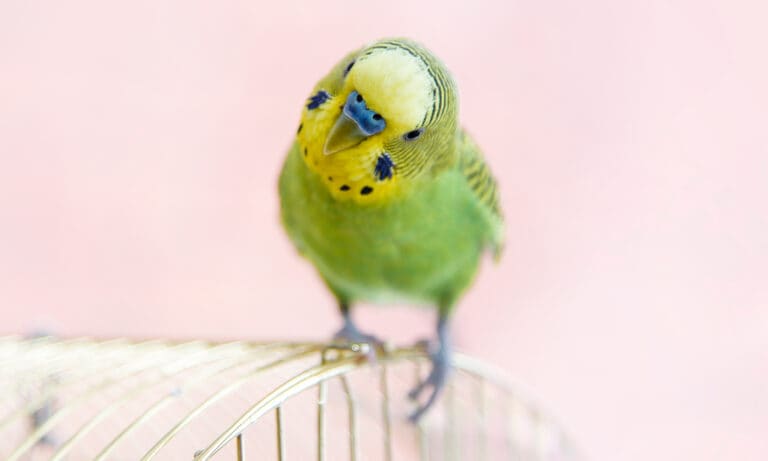Ants ways are incredibly varied and intricate, with each of the 12,000 or so of the world? species going about their lives in a different way. Their relentless quest for food and space has shaped entire ecosystems by dispersing seeds, pruning and clearing vegetation, and culling insects and other small animals.
Pound for pound the world’s entire ant population probably outweighs that of humans as much as 12 to one. The success of ants, as measured by their sheer numbers, is a result of their intense cooperation and incredible ability to communicate with each other. Using volatile chemical compounds released from various parts of their bodies to “talk,?individual ants can illicit their nest mates to perform a variety of tasks ranging from “Feed me” and “Go here to find food” to “Attack!”
Can ants hurt my bird?
Depends on the ant. Southern fire ants, as well as some others, will attack and kill nestlings. It is unlikely that these species will invade a home. It would be unusual if Argentine ants, the ones invading most homes throughout Southern California and the Unites States, will hurt a pet bird.
Will birds eat the ants?
Depends on the birds. There are birds that eat ants but probably are not kept as pet birds. Most ants are pretty sour and are usually avoided by many predators, including birds.
Ants In The Home
Despite the thousands of ant species known worldwide, only a handful regularly invade human dwellings. Although most live outdoors in underground nests, scouts are always on the lookout for food to feed their young.
Upon discovering food or water, the scout ant picks up a sample and lays down an odor trail all the way back to the nest. The chemical components of the trail alerts and guides nest mates to the goodies. Each ant using the trail reinforces it with its own chemicals, which in turn recruits even more ants to the site.
This is why you can’t ignore the occasional scout or two roaming about your countertop. Upon finding something of interest, the scouts will quickly leave, only to return with hundreds or thousands of their fellow workers to your kitchen. Ants often invade homes during hot, dry weather in search of water. They also move indoors to avoid cold or wet weather.
Securing your home is the best defense against ants. Use a silicone caulk gun to plug and seal holes and cracks in walls, especially around plumbing and windows. In a pinch you can temporarily plug holes and cracks with petroleum jelly or glue, or squirt undiluted dish soap into the breach.
Some powdered substances are irritating to many crawling insects, especially ants, and they will simply not cross a line of such stuff. Powdered charcoal or cleansers, cayenne pepper or diatomaceous earth can be used to create impenetrable barriers to ants. A solid line no more than a quarter-inch wide sprinkled around food stores and pet cages will help keep ants out. However, ants are masters of improvisation and will quickly exploit the smallest breach in powdered barriers.
Place honey jars and pet dishes in bowls of water to create a moat around these favorite ant targets. Adding a drop or two of dish soap to the “moat” water will further increase their impenetrability to ants. Bird cages and other pet homes can also be isolated in a similar manner. Be sure to check and change the water frequently to keep ant scouts at bay.
Household products, such as window cleaners, furniture polish and other spray cleaners will all kill ants. But the least expensive, simplest and least toxic method, at least to your family and pets, is a spray of soapy water. Simply place a teaspoon of dish soap in a spray bottle of water, and spray the invaders with the solution.
They will drown almost instantly. The soap acts as a wetting agent, allowing the water to penetrate and clog their breathing pores located on the sides of their bodies. The soapy water also eliminates their scent trails that lead the ants outside into your home. Blended citrus peels in water and citrus or mint oil also kills ants on contact.
Good sanitation is also a vital part of an effective ant-prevention program. Remove potential food sources inside the home by wiping up spills and counter tops and by storing foods in sealed containers. Dead insects that accumulate on windowsills are also attractive to some house ants and should be removed frequently.
Destroying The Ant Nest
The only way to effectively deal with household ants is to follow the tiny invaders to their source ?the nest. Once the nest is found, it must be destroyed. Simply drowning ants in their nests with water may give you an extremely brief sense of control. But the truth is that their bodies are quite water proof, and most will simply float away to carry on the battle another day.
The trick is to hose the nest with water until the workers come boiling up to the surface with their brood looking for higher ground. Then douse them with soapy water or a solution of blended water and citrus fruit peels.
Garbage cans often attract hordes of ants eager to haul away bits of your discards. By keeping your garbage away from your house you can reduce the chances of ants wandering from your trash receptacles into your home.
Plantings of peppermint and tansy supposedly will also keep ants at bay. At the very least they will dress up this often-neglected part of your property.
Reduce the insect and spider traffic in your home dramatically simply by trimming back vegetation growing against buildings, especially ivy. Remove potential ant nesting sites, such as plant debris, firewood, or lumber, adjacent to your home or apartment building.
Ants with a “sweet tooth?are always found streaming up and down trees infested with aphids and their relatives, scale insects and mealy bugs. The ants are after the honeydew excreted by their little plant-sucking cousins. Honeydew is hard to miss since it coats everything below an infested tree in a shiny, sticky film. The honeydew is also a substrate for sooty mold, the blackish and velvety-looking stuff that quickly colonizes honeydew spattered on leaves, parked cars, driveways and sidewalks.
The most effective way of getting rid of these ants and aphids is to prune the tree so that it only contacts the ground at the base of its trunk. Then wrap the trunk with double-sided masking tape. You can also paint a band of Stickem?and Tanglefoot? sold at nurseries, around the trunk. Even petroleum jelly will work.
But remember that ants are more than just opportunists; they are incredibly adaptable and will exploit any breach across a sticky or greasy barrier, including the masses of bodies of their fallen comrades. Check your barrier of choice every few days, and be prepared to re-apply it again should the ants find their way across. With their protectors gone, the aphids are now vulnerable to a host of predators and parasitoids.
Sprinkling powdered charcoal or diatomaceous earth around the bases of aphid-infested trees or around homes and buildings may also serve as a deterrent, especially in the dry southwest. However, humid or rainy conditions will reduce the effectiveness of this method.
The best way to control ants is to hit them where they live by using bait. The best kinds of baits are those that are attractive to the ants (fats or sweets) laced with a little something extra. The extra ingredient should be a slow-acting toxin that allows the ant time to return it to the nest and share it with its nestmates. Your ultimate target here is the queen, and you are attempting to use one of her minions as your instrument of death.
Many commercially available bait stations are brimming with incredibly toxic stuff, but they are overkill. Look for brands that use boric acid. Since this toxin is slow acting, it may take a week before you begin noticing some results. Keep all pets away from ant baits and pesticides or insecticides.
In Tiny Game Hunting, (2001, University of California Press), a book with tips on environmentally friendly ways to trap and kill home and garden insect pests, authors Hillary Dole Klein and Adrian M. Wenner suggest a homemade bait. Dissolve a cup of sugar in 2 cups of boiling water. Let the water cool, add a tablespoon of 100-percent boric acid, and mix the solution well. Plastic film canisters, clearly marked as poison, make the perfect bait station. Punch holes in the lid or the sides of the canister. Stuff the canister with absorbent materials such as cotton balls or cut-up sponges, and fill the canister with boric acid solution. Set the station along the ant trail, spilling a drop or to alert the passersby as to the sweet contents of the bait station.
Scouts will find the bait and return it to the colony without you having to locate the nest. Do not disturb the ant trail, because this will prevent them from returning to the nest and sharing the tainted bait with their sisters and the queen.
Learning To Live With Ants
In the heat of battle keep calm. Remind yourself that it is not only impossible, but also undesirable to eliminate all ants, especially in your garden. Outdoors, they are the most important insect predators in your garden.
Their feeding activities help control numerous small insects including flies, caterpillars and other crawling insects. To a limited extent, they keep termites at bay, preventing them from becoming established in our homes.
The digging activities of ants help to aerate the soil, more so than even earthworms. Ants also help to spread and plant seeds. Some plants actually benefit from the activities of ants because they drive away leaf-feeding caterpillars and beetles. Indoors they eat the eggs and larvae of fleas, prey on cockroaches and might even attack silverfish, clothes moths and various other pantry pests.
Get to know your ant foes before you set out on a killing spree. By carefully observing what attracted the ants to your home in the first place, you can reduce or eliminate future temptations. Don? disturb the ant trail until you have had a chance to trace it back outside to the nest. Locating the exits and entrances that ants use to gain access your home will help you to formulate a directed and more successful ant-control program.
Whatever you do, fight that urge to spray insecticides. These sprays will certainly kill some of the ants, but its staying power in the environment will assure the death of lots of other things you had no intention of harming. Insecticide sprays also contaminate bait stations and repel the ants. Colonies sprayed with insecticides may relocate but, in the worse case scenario, will divide into several separate colonies, defeating your control efforts.
Ants 101
All of the world? ants are completely social, living in societies of hundreds to millions of individuals. Each colony is populated by overlapping generations of ants that work together to care for the queen and brood, find food, expand the nest and protect the colony.
Wingless ant workers are familiar insects easily distinguished from termites; they have narrow waists and sharply bent or “elbowed?feelers. Winged king and queen ants are distinguished from winged termites by having hind wings smaller than the front wings.
Like butterflies, ants develop by complete metamorphosis and pass through four distinct stages: the egg, a worm-like larva, an almost immobile pupa and the adult.
There may be discrete size classes among the workers. Smaller workers generally stay inside the nest to care for the young, tend the queen and perform other housekeeping duties. Medium-sized workers venture out into the world to forage for food and expand the nest. The largest workers, known as soldiers, defend the colony and are sometimes identified by their large heads and mandibles.
In early spring and summer, usually following a thundershower, hundreds of winged males and females (kings and queens) pour out of the nest on their nuptial flight. After mating, the queen loses her wings (and her mate!) and starts a new colony. She digs a small chamber under a stone or beneath tree bark and lays a few eggs. During this time she does not venture out to find food, relying instead on the fat stores in her body to feed herself and her first brood through regurgitation. The first workers to emerge are tiny and take over the duties of feeding the larvae, foraging for food and expanding the nest.
With the exception of kings and queens, all ants in the nest are sterile females. Only queens can lay viable eggs, sometimes by the hundreds or thousands every day for several years or more. As with their relatives ?bees and wasps ?fertilized ant eggs become females, either future winged queens or forever wingless and sterile workers, while the unfertilized eggs are destined to become males.
After hatching, the larvae are cared for by nurse ants and, after several weeks, transform into pupae. The pupae are sometimes contained within silken cocoons. The quality and quantity of food received by the larvae raised from fertilized eggs determine if they will become future queens or workers.
All worker ants bite, but not all sting. Those that do sting do so with a modified egg-laying tube. Some species that bite are able to enhance the pain inflicted by spraying the wound with acid, which can result in a stinging sensation.
Ants of The World
Argentine Ants (Linepythema humile)
The most common household ant all across southern United States is the Argentine ant. A native of South America, Argentine ants found their way to New Orleans sometime during the late 19th century, apparently in coffee shipments from Brazil. What they lack in size (they are about an eighth of an inch long), they make up for in numbers. Their multi-queened colonies may surge into the millions during the summer. They will out compete and wipe out all other ants in the vicinity.
Argentine ants are attracted to all kinds of human and pet foods, but they are particularly fond of sweet substances. They file into homes and apartments, even up into multi-storied dwellings, in search of food and water. Hot, dry weather drives them indoors, as well as persistently rainy or cool weather. Because of their small size, the bite of this stingless ant is negligible to humans. Their predilection for sweet substances drives them to protect aphids, scales, mealybugs and other related insects that produce honeydew. They typically nest outdoors in the soil.
Odorous House Ant (Tapinoma sessile)
When crushed, these uniform brown-to-black ants give off an odor that suggests to some the aroma of rotten coconuts. They are second only to the Argentine ant as a house pest. They tend to invade houses late in the summer as leaves are falling, and their sources of honeydew have dried up or disappeared. They cannot sting.
Pavement Ant (Tetramorium caespitum)
This pale- to dark-brown species is a bit larger than the Argentine ant. This ant has paler appendages and nests under stones, along curbs and in sidewalk cracks. The entrances to their nests may or may not be surround by earthen craters. Pavement ants also nest in buildings within masonry or woodwork. They like both greasy and sweet foods.
Pharaoh Ants (Monomorium pharaonis)
Both the common and scientific name of this ant were derived from the mistaken belief that ants were one of the plagues that visited Egypt during the time of the Pharaohs, but only those of lice, fleas and locusts are mentioned in ancient texts. Similar to the Argentine ant but slightly smaller, Pharaoh ants range in color from yellowish to light brown or reddish. They are cosmopolitan, spread throughout the world through commerce. Although they nest outdoors in the soil, pharaoh ants often become established inside the woodwork and masonry of buildings, especially those where foods are handled and stored. Although omnivorous, they are particularly fond of fat, grease and meats.
Thief Ants (Solenopsis molesta)
Half the size of Argentine ants, these tiny reddish to yellowish ants commonly enter homes where they search for items with a high-fat or protein content. Their small size allows them to exploit even the smallest gap in food packaging. This makes them difficult to keep out. Thief ants usually nest outdoors in the soil, often near the nests of other ants, where they steal both the food and brood of their neighbors.
Posted By: Chewy Editorial
Featured Image: Via Lorcel/Shutterstock
Share:









